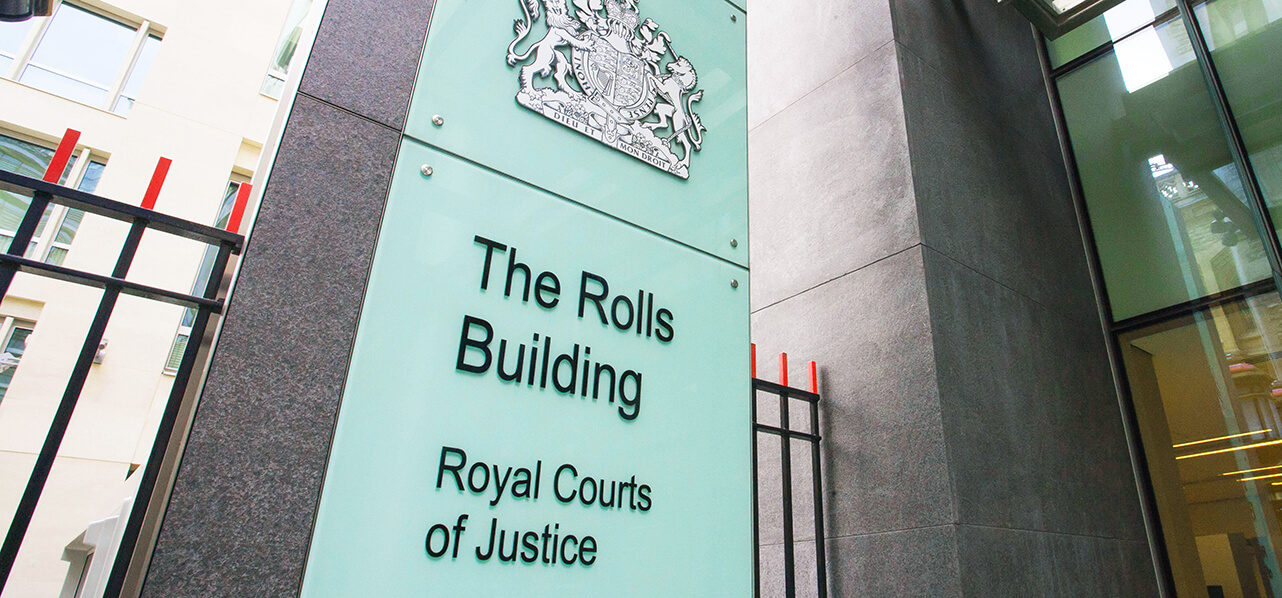Partner Bangkok
"The idea behind cryptocurrencies, such as Bitcoin and USDT, is that they are transacted based on cryptographic proof, rather than on trust or legal rights."
What was the case about?
The claimant, Mr D’Aloia, was induced to transfer approximately £2.5m in USDT by alleged fraudsters. This USDT was then allegedly subject to a series of unauthorised transfers through cryptocurrency wallets on various cryptocurrency exchanges. The claimant sought a recovery by commencing High Court proceedings against various defendants, including the alleged fraudsters and the multiple cryptocurrency exchanges whose platforms the USDT was alleged to have passed through.
The claim against one defendant was struck out, a settlement was reached with another and summary judgment was pursued against others (including the alleged fraudsters), with the claim against Bitkub proceeding to a full trial.
In a lengthy judgment, Judge Farnhill held that Bitkub was not liable as the claimant had failed to demonstrate that the USDT could be traced or followed to a cryptocurrency wallet held by them.
Judge Farnhill also addressed the question of whether cryptocurrencies are property under English law and made some important findings as to the nature of the property rights associated with USDT.
What is cryptocurrency/USDT and what makes it hard to categorise it as property?
USDT (Tether), a stablecoin which is ‘tethered’ to the value of the US dollar, was the cryptocurrency subject to the alleged fraud in this case. The idea behind cryptocurrencies, such as Bitcoin and USDT, is that they are transacted based on cryptographic proof, rather than on trust or legal rights. In other words, the fact that cryptocurrencies are based on cryptographic proof means they can be transacted securely without the need for enforceable legal rights to attach to them. However, given the concept of property has historically been tied to legal rights, this generates a legal problem regarding whether and how to identify cryptocurrencies as ‘property’.
Several interim hearings in the English Courts had grappled with this question in recent years, as had a Law Commission Report (Law Comm No 412 “Digital Assets: Final Report”), but it had yet to be decided at full trial in the English Courts.
Key contacts
Senior Associate (Foreign Qualified Lawyer) Hanoi
Associate Bangkok
Senior Associate Bangkok
Associate Bangkok
Associate Bangkok
"Considering this key argument against cryptocurrency being property – i.e. that property must entail a transferable legally recognised right – Judge Farnhill then considered case law that challenges this notion."
USDT is property
In tackling this issue, Judge Farnhill started by considering recent interim judgments and the Law Commission Report which dealt with this question, which support the view that cryptocurrency is neither a chose an action or a chose in possession but falls within a third category of things which attract property rights[1].
Judge Farnhill then proceeded to consider in detail the arguments against cryptocurrency being property, in particular the position advanced most prominently by Professor Stevens in his 2023 article “Crypto is not Property” (2023) 139 LQR 615 to the effect that property cannot exist in the absence of a legally enforceable right attaching to it. To illustrate his point, Professor Stevens uses the example of choses in action which he says are “rights only capable of being vindicated through court action, that do not have as their subject matter a thing capable of possession”, whilst noting that tangible property is also about rights (in relation to things that are capable of being possessed) and that these are also similarly capable of being vindicated through court actions. Professor Stevens accordingly rejects that there can be a third class of property requiring them to be neither choses in possession nor choses in action and reiterates that all forms of “property” must entail a transferable legally recognised right.
Considering this key argument against cryptocurrency being property – i.e. that property must entail a transferable legally recognised right – Judge Farnhill then considered case law that challenges this notion. Judge Farnhill concluded, based on cases such as Ex parte Huggins; In Re Huggins (1882) 21 Ch D 85, Attorney-General of Hong Kong v Nai-Keung [1987] 1 WLR 1339, and Gwinnutt v George [2019] EWCA Civ 656 that “an expectation not based on a legal right, power, immunity or privilege may be something to which property rights can attach, provided that expectation [is] clear and well founded”. In other words, it is possible for property rights to arise even where there does not exist a transferable legally recognised right.
Judge Farnhill noted that, given the foundation of USDT is the cryptographic security of the blockchain, there is more than a mere hope that transactions will be honoured – “there is an expectation that this will happen based on cryptographic security that is designed to make it happen”.
In terms of what the nature of an asset such as USDT is, Judge Farnhill noted that it is more than mere data, and that it is a “combination of both data and transactional functionalities” which is sufficient to provide the expectation that the transaction will be honoured and thus enable it to attract property rights.
Farnhill’s conclusion was therefore that “USDT, while neither a chose in possession nor a chose in action, is capable of attracting property rights for the purposes of English law”.
This finding offers cryptocurrency users greater certainty that, whilst cryptocurrency such as USDT is independent of any particular legal system, the English Courts are inclined to recognise that property rights attach to such assets.
Whether/how crypto-assets can be followed and/or traced
Following and tracing are both exercises in locating assets in the hands of a defendant or third party:
- following is the process of following the same asset as it moves hand to hand; and
- tracing is the process of identifying a new asset as a substitute for the old.
In considering whether USDT can be traced/followed, Farnhill found that, consistent with his characterisation of USDT as property, it can be characterised as a “persistent thing”, maintaining a distinct entity even in a mixture, allowing it to be followed through different wallets, even where those wallets contained or subsequently received USDT from other sources.
Farnhill held that, in principle, USDT, a distinct class of asset to which property rights attach, could be traced or followed. However, in this case:
- tracing could not be done, as tracing through mixed funds is impermissible under common law; and
- Farnhill considered there was no evidence, whether from Tether Ltd or any other source, which allowed the following exercise to be undertaken.
Some instructive comments were also made on tracing methods available to fraud victims. Farnhill confirmed that established methods such as the ‘first in first out’ method are not the only options, and that other methods are available to parties provided that those methods are methodologically sound, treat all innocent claimants comparably and are properly evidenced. It is this last factor – providing proper and robust evidence – which poses a big challenge in situations where funds are alleged to have passed through multiple wallets.
Concluding remarks
This is a welcome Judgment which provides important clarification and guidance in relation to the nature of the property rights associated with cryptocurrencies.
It also illustrates the difficulty of bringing an English Court claim against a foreign cryptocurrency exchange, or tracing cryptocurrency to it, in circumstances where the funds have allegedly passed through multiple wallets, and in circumstances where the exchange is subject to and complying with local laws and regulations which dictate how it should be run and how it manages client information.
The full Judgment can be read here.
Footnotes
[1] In particular:
- AA v Persons Unknown [2019] EWHC 3556 (Comm): Judge Farnhill referred to Bryan J’s judgment in AA v Persons Unknown [2019] in which Bryan J accepted that property was not limited to choses in possession and choses in action, but that cryptoassets are also property. Brian J had relied on the four criteria set out in Lord Wilberforce’s classic definition of property in National Provincial Bank v Ainsworth [1965] AC 1175 as being (i) definable, (ii) identifiable by third parties, (iii) capable in their nature of assumption by third parties and (iv) having some degree of permanence.
- Tulip Trading v Van Der Laan [2023] EWCA Civ 83: Judge Farnhill also referred to Birss J’s judgment in Tulip Trading v Van Der Laan [2023] which he read as indicating that:
- cryptoassets attract property rights;
- a key aspect of cryptoassets is that they are rivalrous, that is to say ownership by one person prevents ownership by another, and this can be contrasted with information, which is not rivalrous even if it has value; and
- cryptoassets exist as something outside the minds of their users (and in that sense are tangible).
The Law Commission Report: Farnhill picked up on certain comments of the Law Commission, in particular, their view that “In England and Wales, across the common law world, and in other jurisdictions, there is now a persuasive, clear and well-reasoned body of case law that concludes that certain digital assets are capable of being objects of personal property rights. Much of the reasoning in that case law relies on analysis that supports or is consistent with our approach that recognises there is a third category of thing to which personal property rights can relate.”
Key contacts
Partner Bangkok
Senior Associate (Foreign Qualified Lawyer) Hanoi
Associate Bangkok
Senior Associate Bangkok
Associate Bangkok
Associate Bangkok









